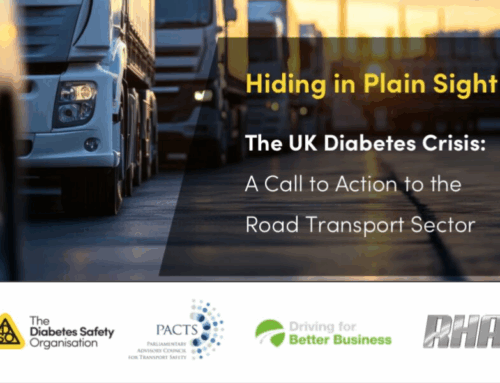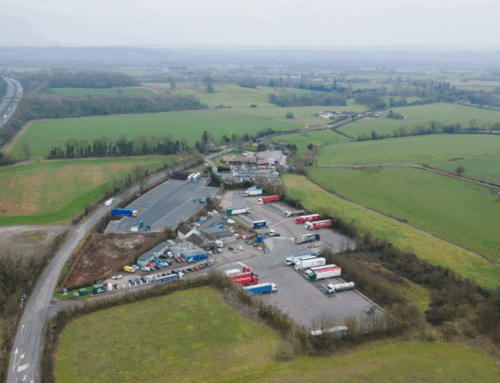“Your clients are becoming more demanding. Increasingly, the procurement process specifies a high standard of risk management. Put simply, if you don’t manage your drivers and vehicles, you won’t get the contract. It will go to your competitors.”
What are the business benefits of managing road risk well?
If you manage drivers and their vehicles – either as your main role or as part of your wider role – the business benefits of managing road risk may not be the first thing that springs to mind each day.
You’ll likely be aware of your obligations around driving for work and compliance, and the ways in which you have to ensure your organisation is safe and legal.
Hopefully, you and everyone else in the organisation will also understand your responsibilities in terms of how everyone in the organisation has a part to play in managing driver safety.
But are you and your management teams missing something?
If you’re not aware of the postive results that employers who manage road risk well are achieving, then the answer is yes – you are.
12 measurable business benefits
According to Mark Cartwright, Head of Commercial Vehicle Incident Prevention at National Highways, organisations report 12 common measurable business benefits of managing their road risk, including:
- Less Collisions/at-fault incident claims car/van
- Less Collisions/at-fault incident claims HGV
- Reduced speeding penalties
- Lower cost of maintenance
- Better Fleet utilisation
- Reduced fuel consumption
- Less Idling
- Lower Insurance premiums
- Lower Emissions
- Less Insurance claims
- Less Public complaints
Have you considered the benefit to your order book though?
As Mark goes on to say in this recent article from The Society of Motor Manufacturers and Traders (SMMT):
“Your clients are becoming more demanding. Increasingly, the procurement process specifies a high standard of risk management. Put simply, if you don’t manage your drivers and vehicles, you won’t get the contract. It will go to your competitors.”
It’s a sobering thought – and one that might help focus the minds of the directors and C-suite at your organisation, as to the importance of a robust driving for work policy and a confident approach to fleet safety.
Who is responsible for managing road risk?
“Driving for work is no longer the sole remit of the fleet or transport manager. Managing risk on the road as effectively as within business premises should be focal for HR and health and safety leaders. In fact, it should be led from the top.
One of the things that terrifies and fascinates me in probably equal amounts is the number of health and safety organisations I’ve come across with robust systems and talented managers and directors that don’t get that their responsibilities extend out onto the road.”
Mark Cartwright, Head of Commercial Incident Prevention, National Highways.
The Driving for Better Business programme exists to help employers reduce and manage work-related road risk. The programme does this by sharing good practice and demonstrating the significant business benefits that result from having a best-in-class driving for work policy and managing your drivers well.
One of the ways that employers and driver managers can get to grips with what can be achieved is by learning from their peers and hearing their success stories.
So, with that in mind…
Collisions down – a cultural change
Speedy Services is the UK’s leading tool, equipment and plant hire services company, with specialist divisions including powered access, lifting, survey, rail and power. It supplies a wide range of equipment to major infrastructure, and construction projects, and to trade and retail customers through its nationwide service centre network and through concessions in a number of B&Q stores.
With over 1,000 commercial vehicles, including 229 HGVs, the company runs an extensive internal logistics operation between its national distribution centre and its 180 trading locations, as well as providing equipment to third parties. As a result og a number of impressive risk reduction measures, they were able to bring collisions down by 13% in just 12 months.
Their Group Fleet Compliance Manager, Gareth Jones, says that when they started in the fleet business, the emphasis was on first notification of loss. As part of their Driving for Better Business journey, there has been a significant cultural shift.
Now it is all about first notification of risk.
Essentially this switches the culture from being reactive – “how fast can we tell an insurer about the collision” – to proactive – “That’s a potential risk so let’s fix it before it causes a collision”.
Reducing Speeding PCNs
TES 2000 is a railway infrastructure and construction company. It runs 140 LCVs, mostly two-seater vans, which are used purely for driver transport. Their Fleet Manager, Mick Kiely, explains how he drove down incident rates and substantially reduced the company’s fleet costs in this recent TES 2000 case study.
One of the areas on which they have focused is speed awareness. Drivers are understandably keen to get home after their shift, and this has sometimes led to speeding. Mick introduced a speed awareness course and told the drivers that their speed would be monitored going forwards. He believes that knowing they were monitored helped to reduce speeding almost overnight.
Penalty Charge Notices (PCNs) have subsequently dropped from 100 to approximately four per month – that’s an impressive reduction in PCNs of 96%.
Heineken UK won the National Highways sponsored Safety and Health Excellence Award 2023 for Best Driver Risk Management Performance. Heineken’s Workspace and Safety Partner, Reka Nagy, outlines how the multi-branded beer, cider and pub company transformed its company car risk profile by emphasising positive reinforcement and driver engagement – read more in the Driving for Better Business case study.
The business benefits they were able to demonstrate were impressive – including speeding events dropping by 50% over 12 months.
Lower cost of maintenance
One area in which every commercial vehicle manager would like to see a reduction in costs is maintenance – and Iron Mountain were able to achieve a reduction of 30% in maintenance costs over 9 years. In addition, since 2008, vehicle incidents have been reduced by nearly 87% and own damage and third party costs have been reduced by around 78%.
They are also aware of other un-quantifiable cost savings through service and reputation, having been awarded several road safety awards over the years, predominately for Driver and Road safety, as a result of initiatives like the Driving for Better Business Programme.
Improved Fleet Utilisation
Vehicle utilisation is something that JMHC Logistics have been able to improve as a result of their work to reduce risk and manage their drivers better. They’ve seen an improvement of 12% in fleet utilisation as well as a drop in recruitment costs, as their driver wellbeing scheme lowers driver churn.
Lower Fuel Consumption, Less Idling
Galaxy Insulation and Dry Lining were able to demonstrate a number of business benefits as a result of their drive to improve road safety. Wayne Allen, Group Logistics Manager, who manages its 64 HGVs and 21 vans which are deployed across its 14 depots, includes the following in the business benefits they have seen:
- Cut fuel use by 30,000 gallons through minimised mileage in 2021-22 against 2019-20, despite adding 38 vehicles to the fleet
- CO2 reduced by 500 tonnes in 2021-22, against 2019-20
- Drop in false claims due to cameras
- Only carbon-neutral construction distributor in UK
Similarly, WJ Group, one of the UK’s leading road safety and highway maintenance businesses specialising in road markings, industrial surface preparation, marine surface coatings, TASCAR, CCTV, and stopped vehicle detection, were able to demonstrate equally impressive figures, with fuel economy up by 12% and Scope 1 emissions down 12.5% in just 15 months.
WJ implemented a driver behaviour scheme which enabled it to accurately review its drivers’ performance using telematics, and combined it with an ongoing and significant rewards system to maintain driver standards.
Since this was introduced across the fleet 15 months ago, they have successfully increased mpg by 12% and reduced CO2 emissions by 7.5% – equivalent to savings of 594 tonnes of CO2 or 225,000 litres of diesel.
Meanwhile, construction giant, Amey, has a variety of initiatives which help reduce the risks its employees and those around them face when using the road. Fleet safety and compliance is supported by board-level engagement. As a result, they have seen fleet utilisation figures up by 25 percentage points in September 2022, compared with January 2020 and average fuel economy up 12%. In addition, fleet CO2 emissions are down 6.7%.
Lower Insurance Premiums
One of the most common business benefits achieved by those organisations that engage with the Driving for Better Business Programme is a reduction in insurance premiums.
Some great examples of demonstrable savings include:
- AES Auto Electrical – fleet insurance down 10% over 2 years alongside zero collisions over 4 years.
- McLaren – cost of fleet insurance reduced by a total of almost 21% per vehicle per year since 2014.
- Conway – £350,000 saved on insurance premiums over 20 years.
- TES 2000 – fleet insurance reduced by 35% per vehicle with vehicle collisions down by 45% in 16 months.
- James Hall Couriers – annual insurance costs reduced by over £1 million.
Safer drivers – reaping the business benefits
Back to Mark Cartwright of National Highways –
“It can’t be emphasised enough: driving for work is one of the highest-risk activities that many employees undertake, whether they drive a commercial vehicle, a company car or make occasional work journeys in their own vehicle. As the gig economy continues to grow, this also means those who ride for work as well as those who drive.
Vans are involved in more fatal collisions that affect other road users per mile travelled than any other type of vehicle. They are often in poor shape: 39% of vans fail their MOT first time; 66% of all vans stopped at the roadside have serious mechanical defects; and of those, 85% should have been identified via a proper pre-use check.
Organisations whose job it is to transport or deliver goods – they know they run a fleet, and they largely know how to do it legally and safely. Those who use a van as part of their work – plumbing and heating, landscape gardening, telecoms – don’t see themselves as commercial vehicle drivers.
We’re there to help them understand their risks and responsibilities – and also to point out the business benefits of doing so.”






